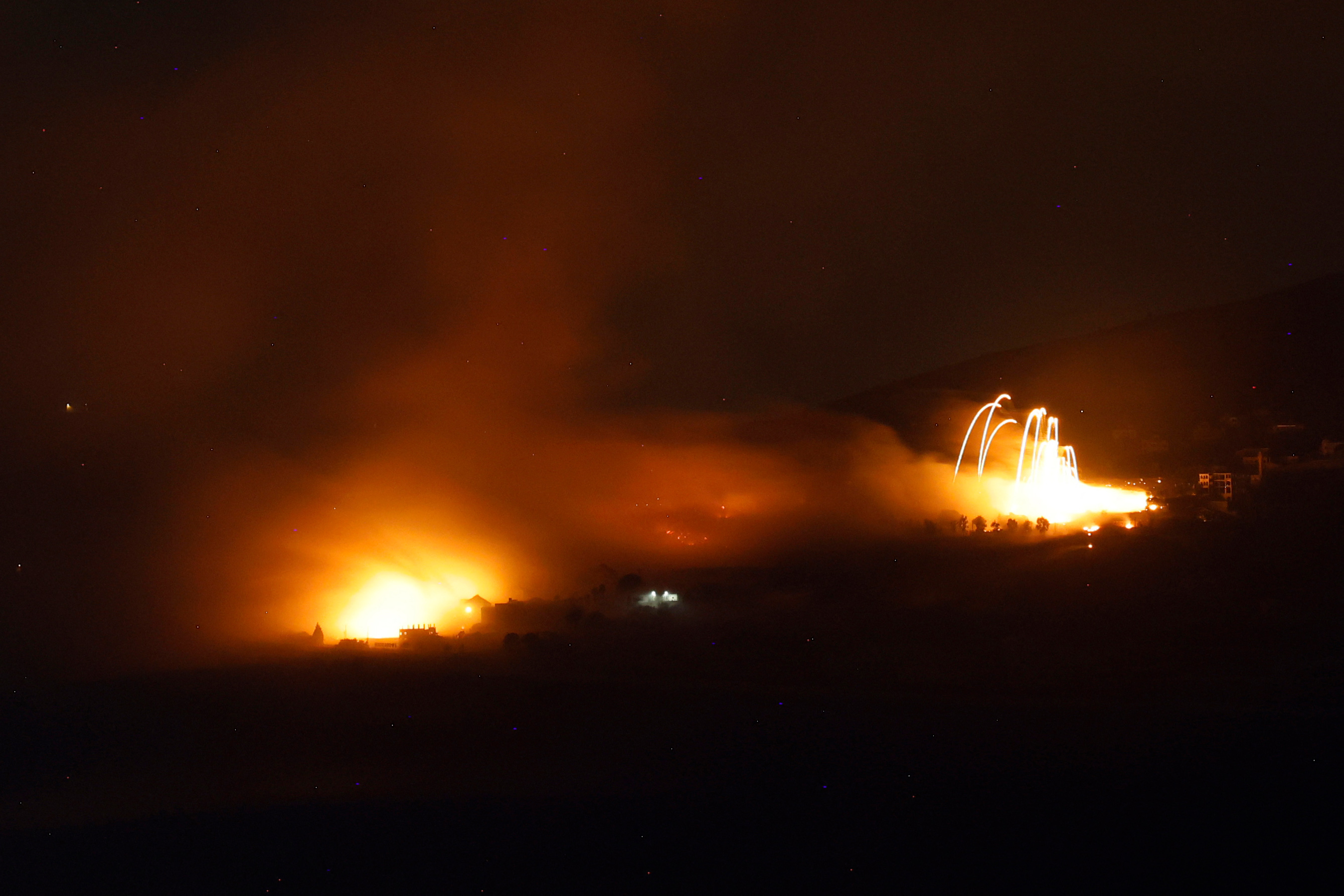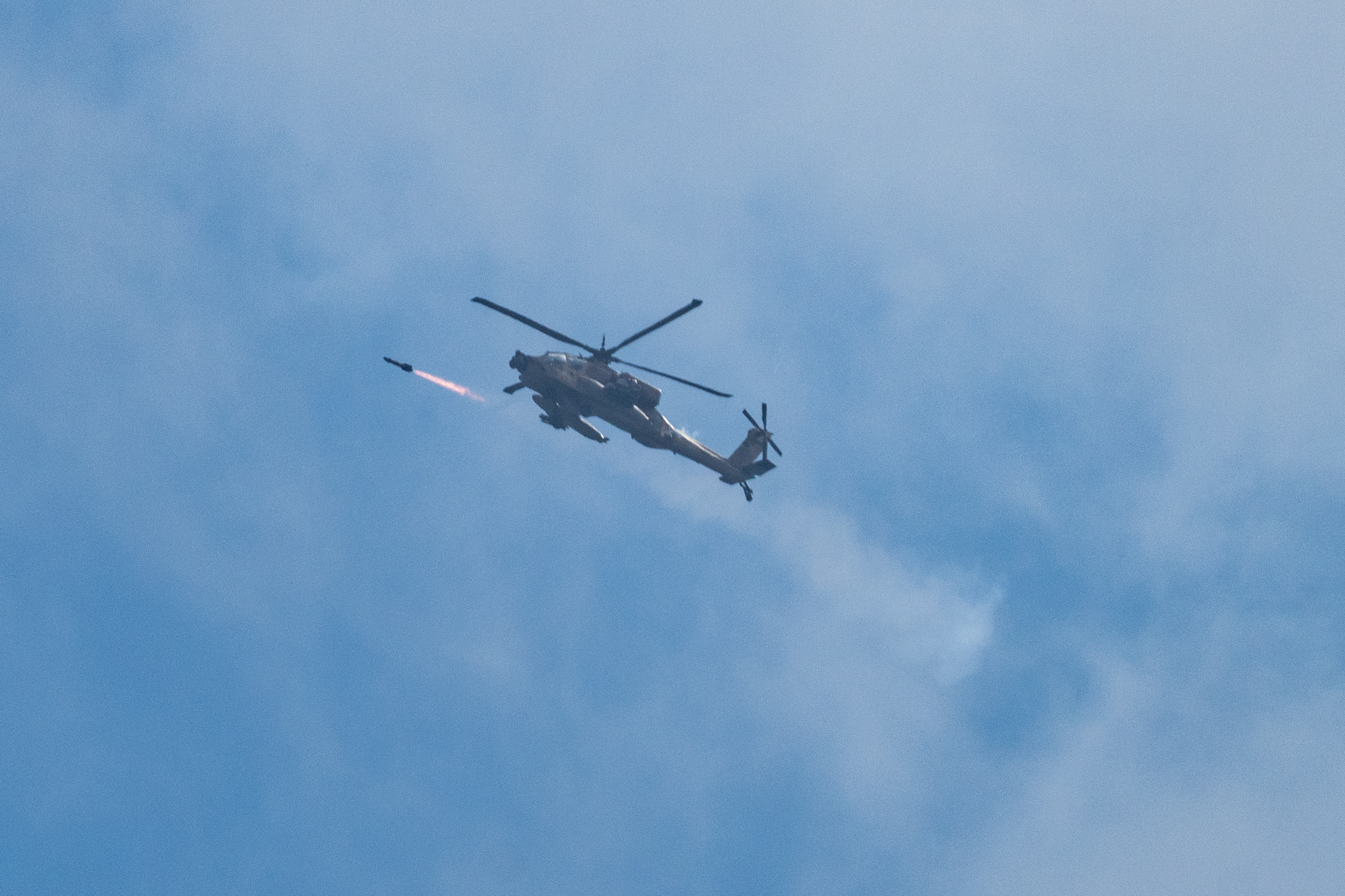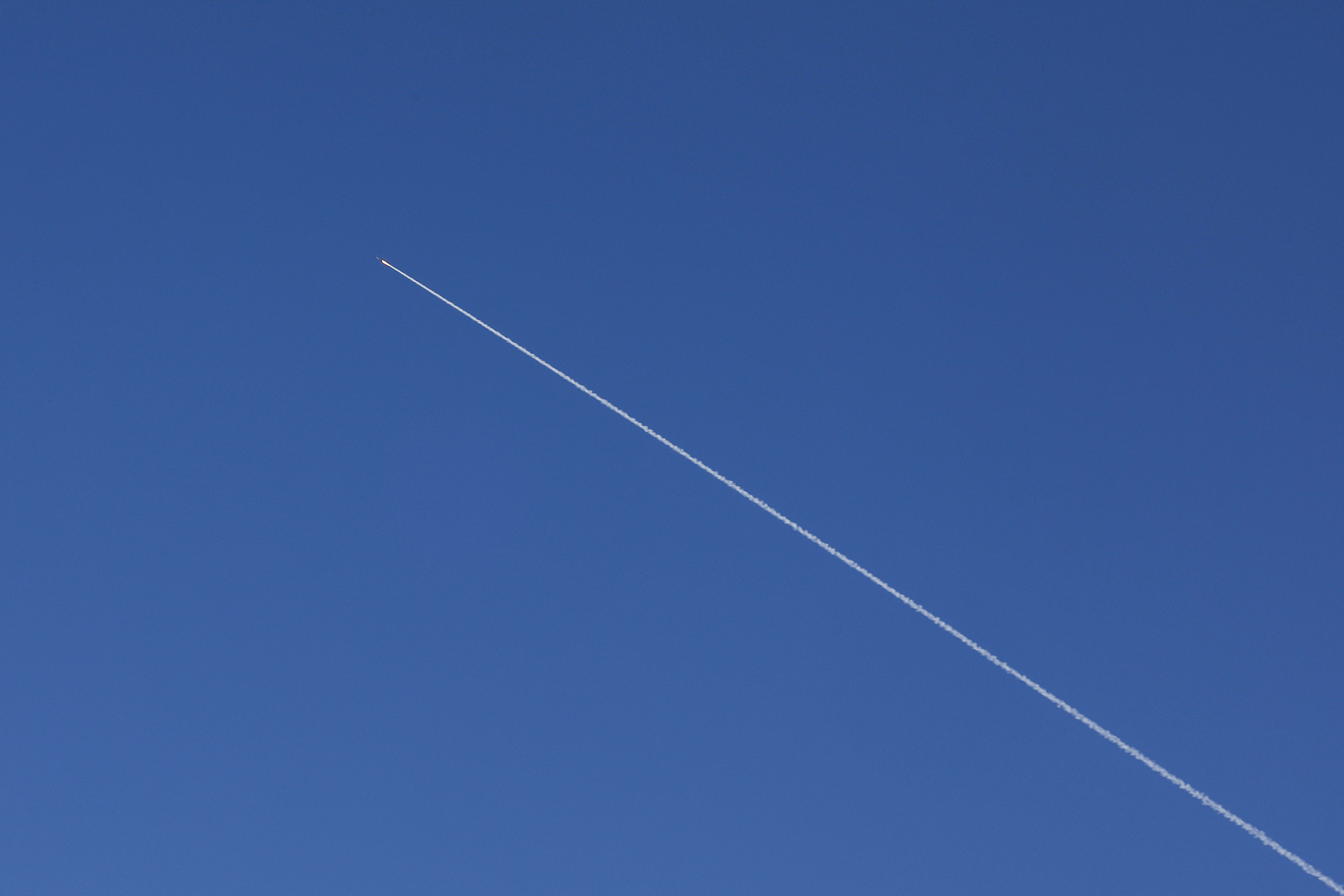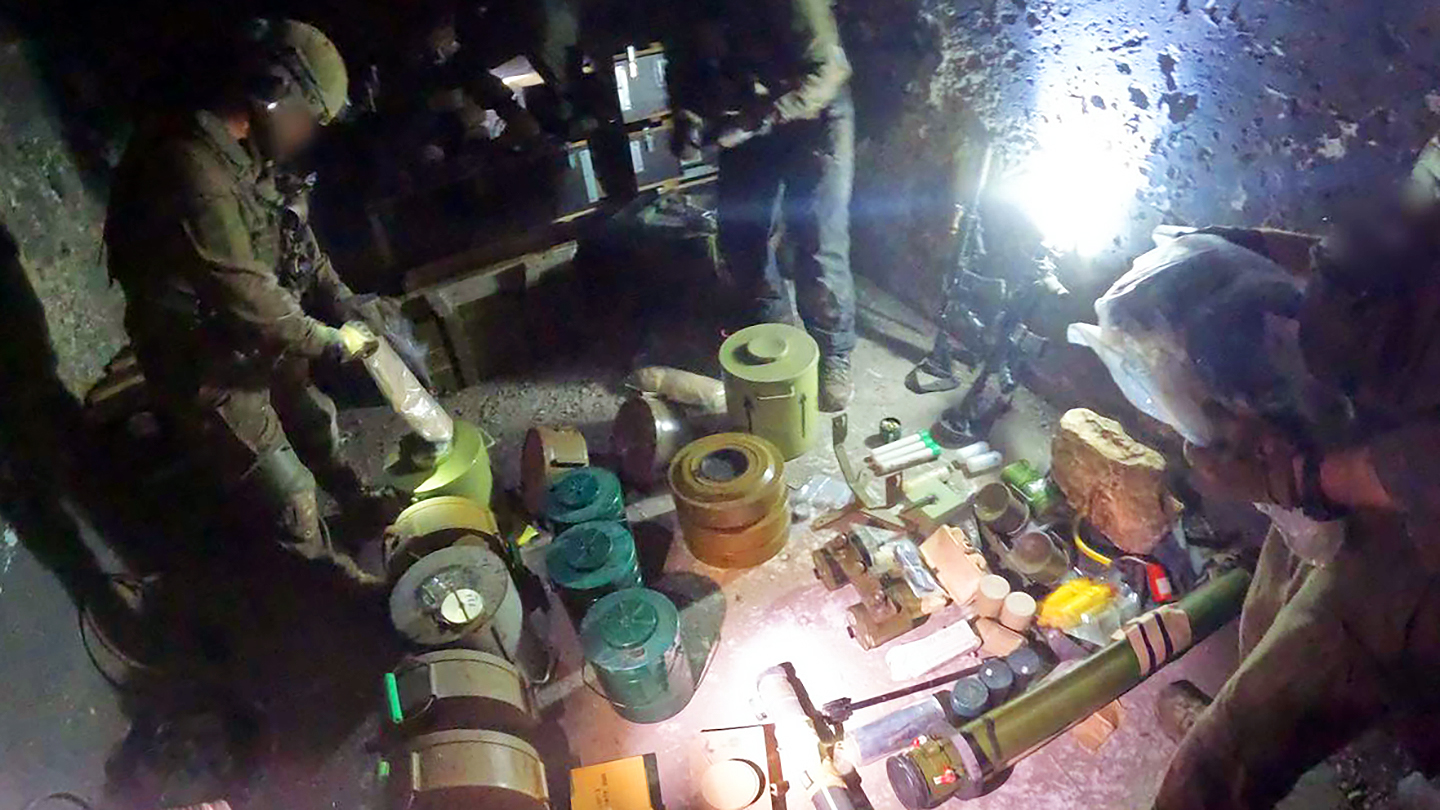Israel’s “limited” ground campaign in Lebanon has entered its second day, now named Operation Northern Arrows. The area around the border in southern Lebanon has been subject to heavy artillery shelling, while the Israeli Air Force (IAF) has again struck targets in Beirut, the Lebanese capital. Meanwhile, there are growing concerns that Iran may be poised to retaliate against Israel in support of the Hezbollah militant group of which it is the main sponsor.
Washington has apparently been kept in the loop about the IDF’s operation, with U.S. Secretary of Defense Lloyd Austin confirming that he has spoken with his Israeli counterpart, Yoav Gallant and that they had “agreed on the necessity of dismantling [Hezbollah’s] attack infrastructure along the border.”
Austin also warned Iran against becoming more deeply involved in the conflict, saying there would be “serious consequences” were Tehran to launch another direct attack on Israel. This comes amid mounting rumors that Iran could be poised to attack Israel, perhaps in a repeat of the missile and drone barrage in April this year. Israeli air defenses, assisted by the U.S. military and other allies, succeeded in bringing down almost all of those incoming weapons. It also remains the case that Iran is yet to respond to the Israeli assassination of the Hamas political leader Ismail Haniyeh, killed in Tehran in a highly embarrassing incident for the Iranian leadership.
The Israel Defense Forces (IDF) say they have launched raids on villages close to the border “that pose an immediate threat to Israeli communities,” as part of a “limited, localized, and targeted” ground operation against Hezbollah.

The raids have reportedly involved IDF commando and paratroop units, with the first such incursions being made overnight and only penetrating a limited distance across the border, according to Reuters, which cited an Israeli security official. The same source said there were no direct clashes with Hezbollah fighters reported overnight.
In a statement on X today, the IDF described undertaking ground raids “based on precise intelligence against Hezbollah terrorist targets and infrastructure in southern Lebanon.”
“These targets are located in villages close to the border and pose an immediate threat to Israeli communities in northern Israel,” it continued, adding: “Operation Northern Arrows will continue according to the situational assessment and in parallel to combat in Gaza and in other arenas.”

Heavy shelling has been reported along the border in the area north of Kiryat Shmona, the scene of heavy fighting in the 2006 Lebanon War. Overnight, targets of the IDF are said to have included the towns of Marjayoun, Wazzani, and Khiam – which sit in a series of interlocking valleys overlooked by steep slopes – were being shelled on Monday night.
Quoting the IDF, the Israeli media says that the operation is being led by the 98th Division, an elite formation of paratrooper and commando units, supported by the 7th Armored Brigade. The 98th Division was previously operating in the Gaza Strip, as part of the war against Hamas.
According to IDF spokesperson Rear Admiral Daniel Hagari, “Hezbollah turned Lebanese villages next to Israeli villages into military bases ready for an attack on Israel.” Local sources report that many residents have already fled southern Lebanon as IDF airstrikes and bombardment ramped up in recent days.
A report from Reuters states that at least 600 people were seeking refuge in a monastery in the town of Rmeish on the southern Lebanon border today after the IDF warned them to leave the village of Ain Ebl. This is one of at least 20 settlements that have received evacuation orders, others including Metula, Misgav Am, and Kfar Giladi in northern Israel.
There are contradicting accounts from Hezbollah about the situation on the ground in the border area.
One Hezbollah spokesperson told Reuters today that Israeli troops had not entered Lebanese territory, but that Hezbollah would be ready to fight them if they did. Meanwhile, two Lebanese security sources told the same agency that Israeli units had crossed into Lebanon overnight for reconnaissance and probing operations.
There has been at least one claim from Hezbollah of its troops engaging IDF soldiers near the Lebanese border towns of Odaisseh and Kafr Kila, “achieving confirmed casualties.” This has not been independently confirmed.
Hezbollah’s deputy leader, Naim Qassem, yesterday said that “the resistance forces are ready for a ground engagement.” In his first speech since the targeted killing of the group’s leader, Hassan Nasrallah, Qassem added: “We know that the battle may be long. We will win as we won in the liberation of 2006,” he said, referring to the 2006 war.
According to Lebanese officials, at least 95 people have been killed and 172 wounded by Israeli strikes in the past 24 hours.
Over the weekend, Lebanon’s health ministry said that more than 1,000 Lebanese have been killed and 6,000 wounded in the past two weeks, while a million people have fled their homes.
Multiple casualties were reported after an Israeli strike that is said to have targeted a building at the Ain al-Hilweh refugee camp near the southern city of Sidon. An unconfirmed report from the Israeli media states that the attack injured Mounir Maqdah, the commander of the Lebanese branch of the al-Aqsa Martyrs Brigade, a Palestinian armed group active in the West Bank and the Gaza Strip.
If confirmed, this would be the first strike on the refugee camp during the current conflict. The overcrowded camp is the largest of its kind in Lebanon.
Hezbollah says it has fired more missiles toward Israel, including at least one example of the Fadi 4 ballistic missile, apparently used for the first time. The new missile is said to have targeted Glilot Base near Tel Aviv, home to the IDF’s Unit 8200 and the headquarters of the Mossad intelligence agency.
Israel’s ambulance service said that two people were injured by shrapnel from the barrage of missiles fired into Tel Aviv and elsewhere in central Israel.

East of Tel Aviv, near the town of Kfar Qasim, the wreckage of a missile interrupted traffic after coming down on a section of highway.
The scale of the threat that Hezbollah’s missile arsenal, in particular, poses to Israel cannot be overestimated and is something that TWZ has examined in detail in the past. However, this is by no means a new development, with Israeli concerns already having led to extensive measures being taken to curb the flow of weapons being transferred to Hezbollah from Iran. Israel continues to target these stockpiles aggressively and meanwhile, Hezbollah’s ability to use them has been hampered by Israeli operations that have inflicted heavy blows on the group’s communications and command and control networks.
Israel’s long-awaited ground operation in Lebanon was approved by the country’s cabinet, according to Israeli media reports, after a meeting chaired by Prime Minister Benjamin Netanyahu.
The buildup to the current IDF ground operation in Lebanon included the campaign of deadly explosions targeting pagers and walkie-talkies used by Hezbollah members two weeks ago and the airstrike last week that killed Hassan Nasrallah, in Beirut. The IAF has continued to strike targets in Beirut, as well as launching long-range attacks on Yemen and Syria.
Over the weekend, dozens of IAF aircraft were involved in airstrikes on the Iran-backed Houthi militants in Yemen, which the Israeli military says is the longest-range combat mission since the 1985 raid on the Palestine Liberation Organization (PLO) headquarters in Tunis. You can read more about these latest Yemen airstrikes here.
Today, the Houthis claimed they had launched drone strikes against IDF posts in Tel Aviv and Eilat.
Meanwhile, in Syria, the official news agency Sana early today reported Israeli strikes in the Damascus area. The agency claimed that Syrian air defense systems had intercepted three rounds of strikes. Sana reported at least three civilians killed and nine others wounded in the attacks.
As is usual, Israel has not commented on the airstrike on Damascus. Still, the IAF has repeatedly launched attacks on Iran-linked targets in Syria for years, with a notable uptick after the start of the latest Middle East conflict in October last year.
Israel has also revealed details of previously secret operations in the lead-up to Northern Arrows, including efforts to locate and destroy weapons belonging to the Radwan Force, the special operation units of Hezbollah.
Since the beginning of the year, the IDF says its special forces have carried out around 70 operations into southern Lebanon, resulting in the capture of 30 tons of explosives, thousands of weapons including advanced anti-tank and anti-aircraft missiles made in Russia, Iran, and China, heavy machine guns, ammunition, and more. Most of these are said to have been taken from Hezbollah’s extensive network of tunnels and basements near the border.
Ever since Israel said it was committed to returning to their homes the thousands of its citizens who fled Hezbollah rockets near the northern border, the expectation has been that a ground operation would be launched. Before its people can return to homes in the border area, Hezbollah’s ability to use short-range rockets, mortars, drones, anti-tank missiles, and snipers first needs to be severely degraded.
In recent weeks, Hezbollah has been rocked by Israeli decapitation operations and airstrikes that have already greatly reduced its fighting potential, but it remains to be seen how long it will take Israel to achieve its goal and at what cost to both sides, as well as the Lebanese civilian population.
Contact the author: thomas@thewarzone.com
